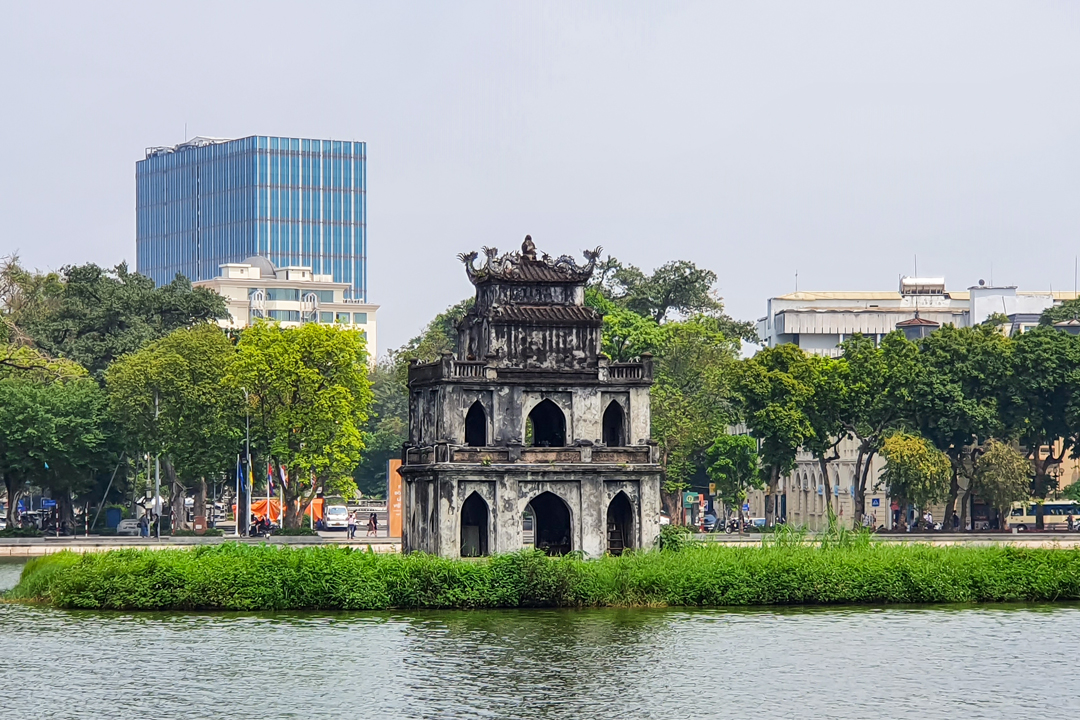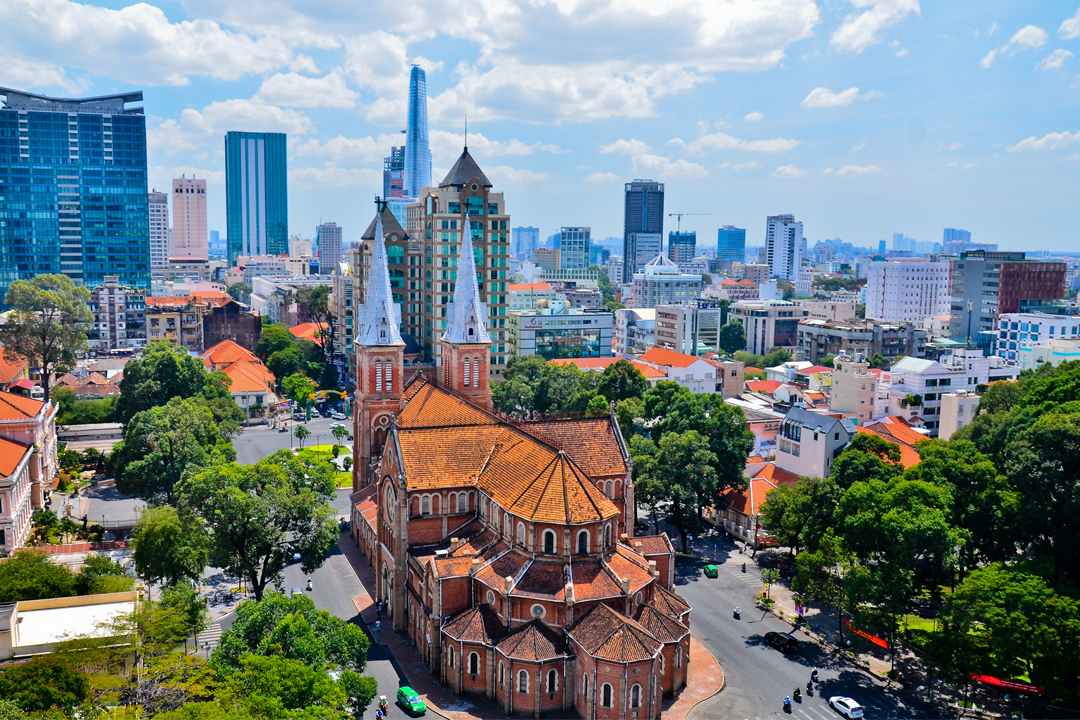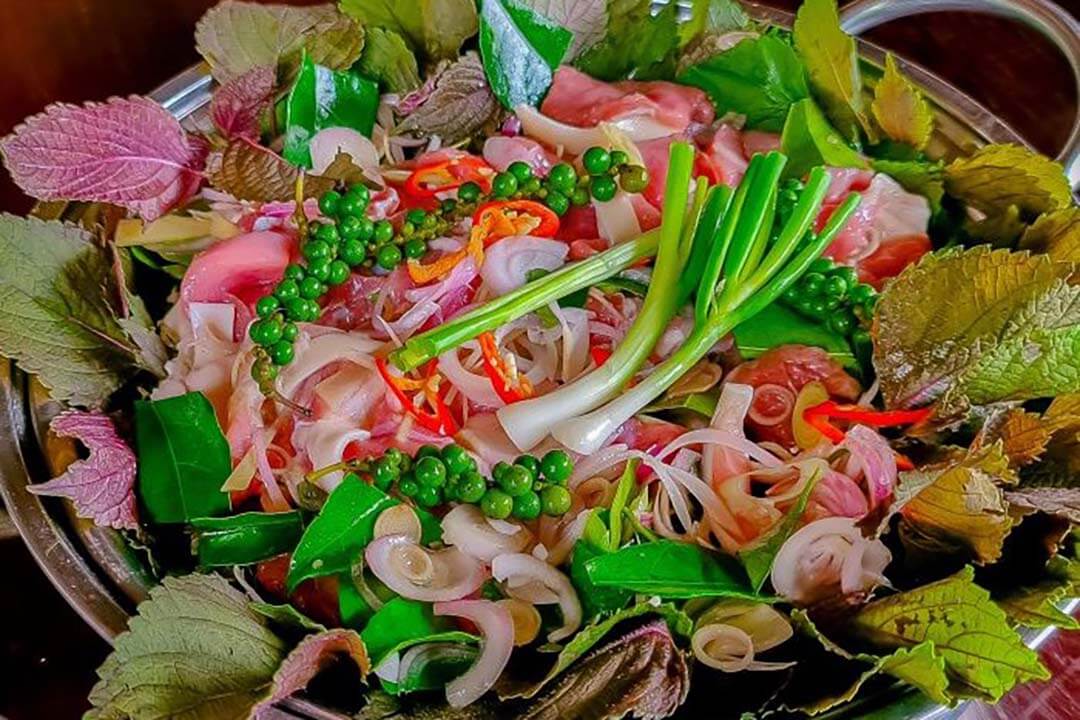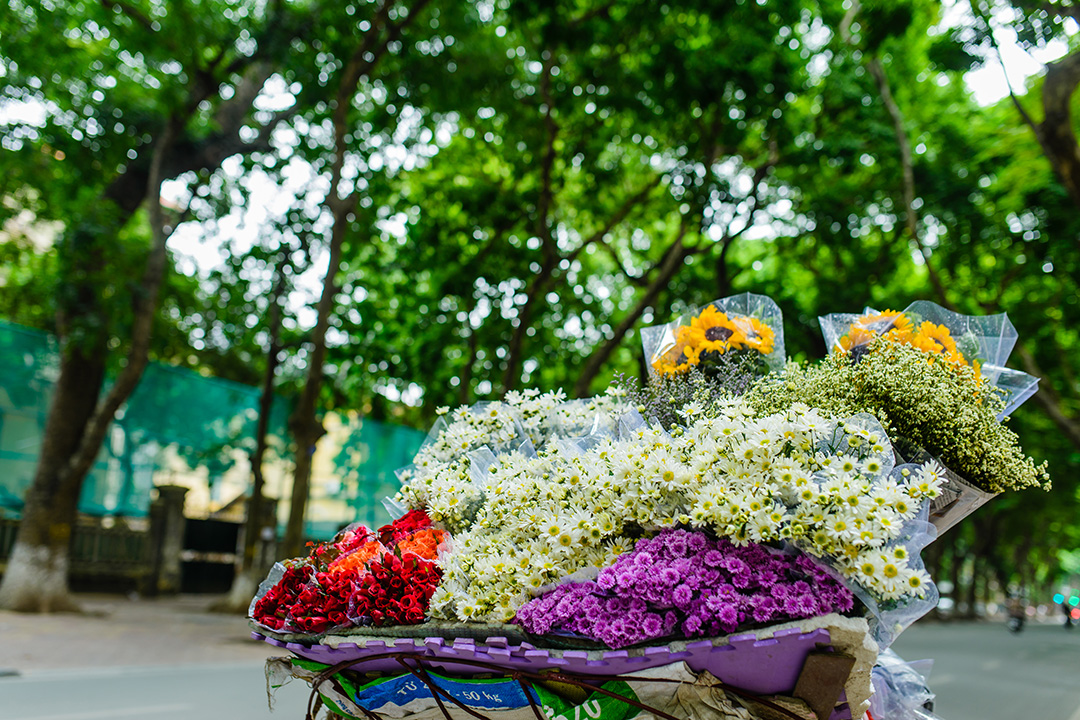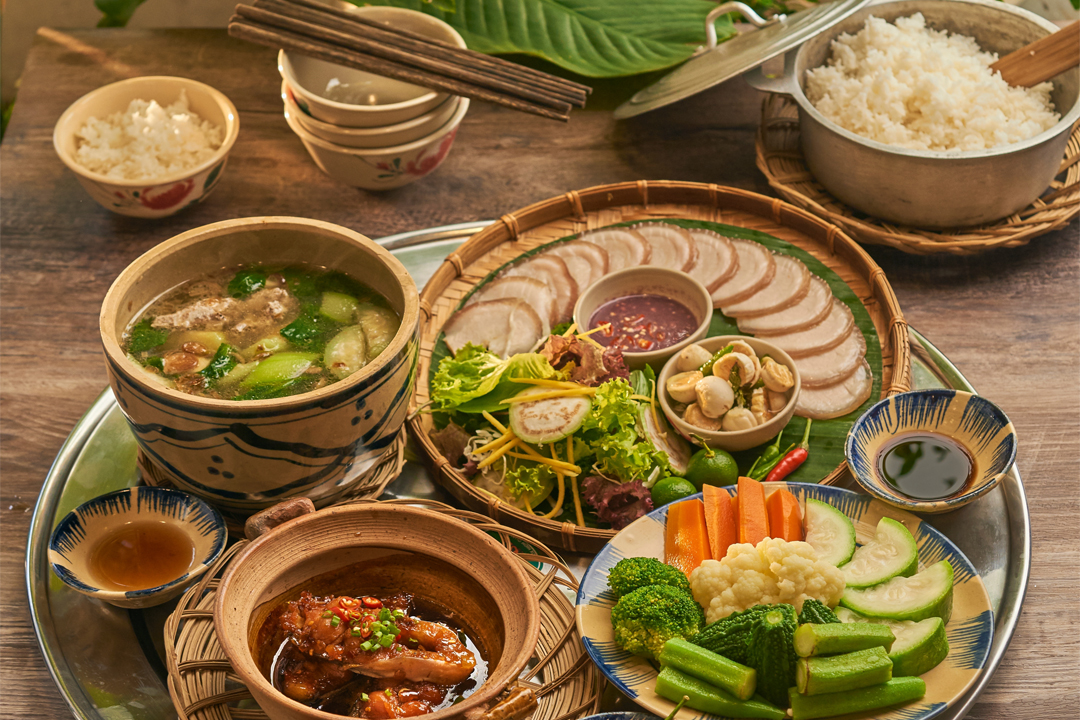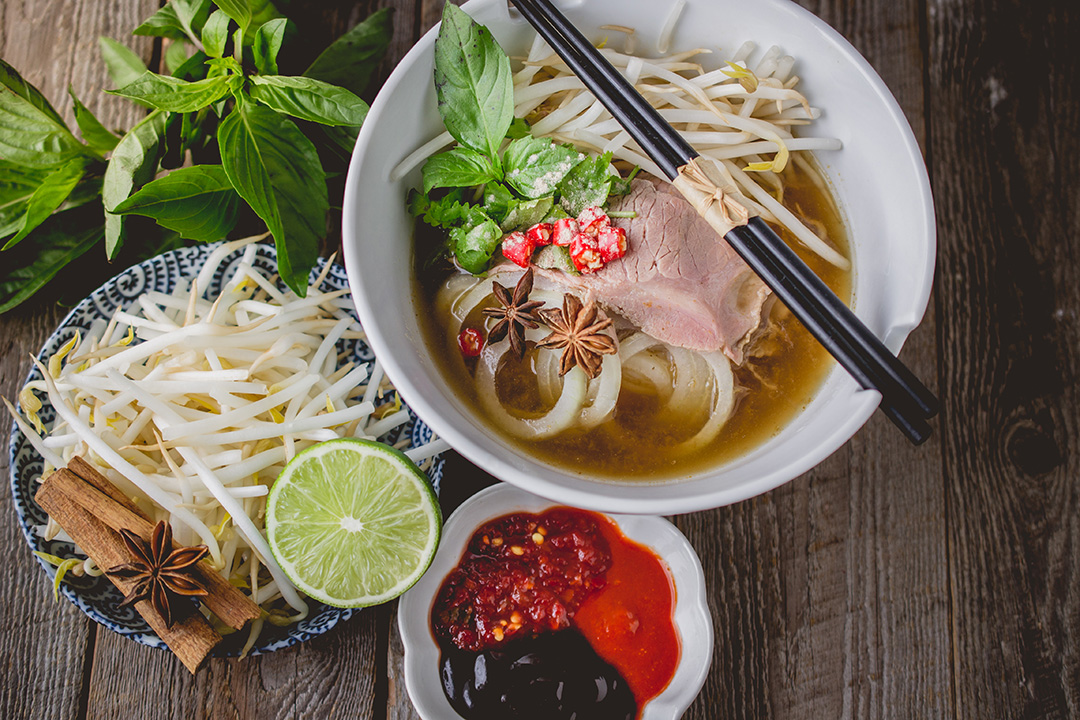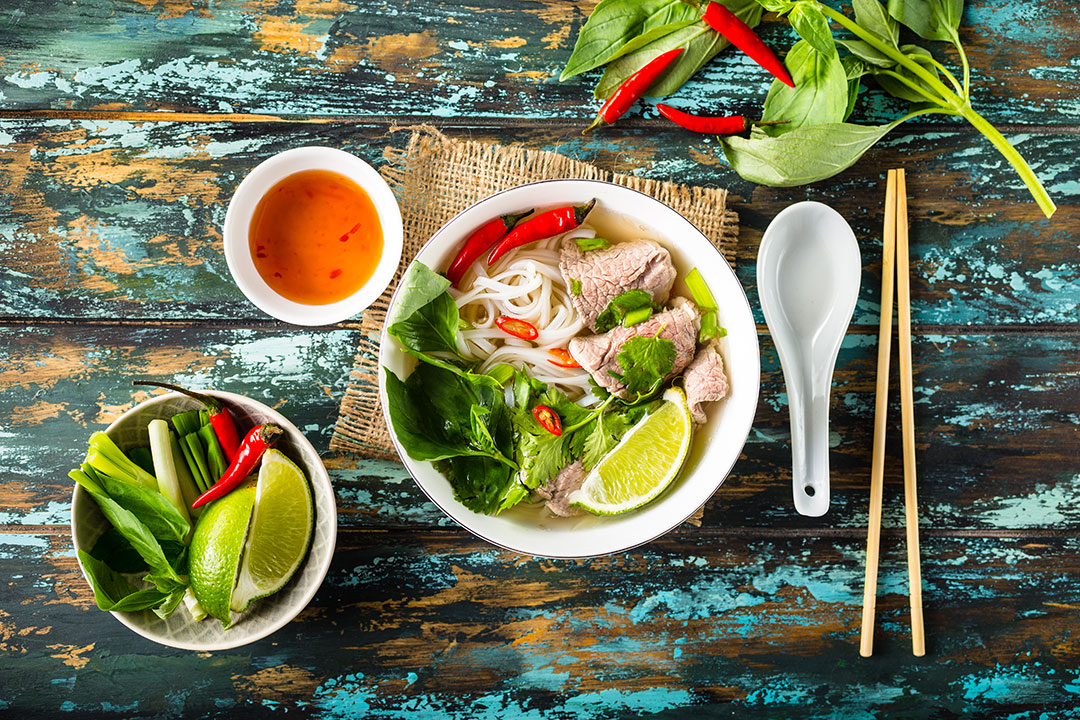Nov - 06 - 2025
Banh mi is a culinary masterpiece that captures the heart of Vietnamese cuisine in a single, handheld bite. This iconic sandwich is a symphony of contrasting textures and tastes, bundling savory meats, tangy pickles, and fresh herbs into a crackly, light baguette. More than just a meal, it’s a piece of history and a staple of daily life in Vietnam. For food lovers and travelers, understanding the banh mi is to understand a key part of Vietnamese culture. This GTrip guide will take you on a flavorful journey, uncovering the history of this celebrated dish, breaking down its essential ingredients. We also explore its many delicious forms, and even teach you how to savor it like a local. Get ready to explore the world of Vietnam's most famous sandwich, from bustling street stalls to your own kitchen.
What is Banh Mi, and its origin?
Banh Mi is a world-renowned Vietnamese sandwich that beautifully showcases the fusion of French and Vietnamese culinary traditions. It consists of a light, crispy Vietnamese-style baguette split lengthwise and packed with an exciting array of ingredients. It typically includes savory meats, rich pate, creamy mayonnaise, tangy pickled vegetables, and fresh herbs. The name "Banh Mi" itself translates simply to "bread" in Vietnamese, a testament to how central this element is to the dish.
The origin of the Banh Mi is deeply rooted in Vietnam's colonial past. When the French arrived in the mid-19th century, they brought the baguette with them. Initially, this bread was a luxury item enjoyed by the French and a small number of Vietnamese elites. Over time, local bakers began adapting the French recipe, using a mix of wheat and rice flour to create a lighter, airier loaf better suited to the local climate and palate. The pivotal moment came in the 1950s in Saigon (now Ho Chi Minh City), where vendors began slicing the baguette and filling it with affordable, familiar Vietnamese ingredients. This creative adaptation turned the once-foreign bread into a distinctly Vietnamese creation, which quickly became an affordable and beloved street food.
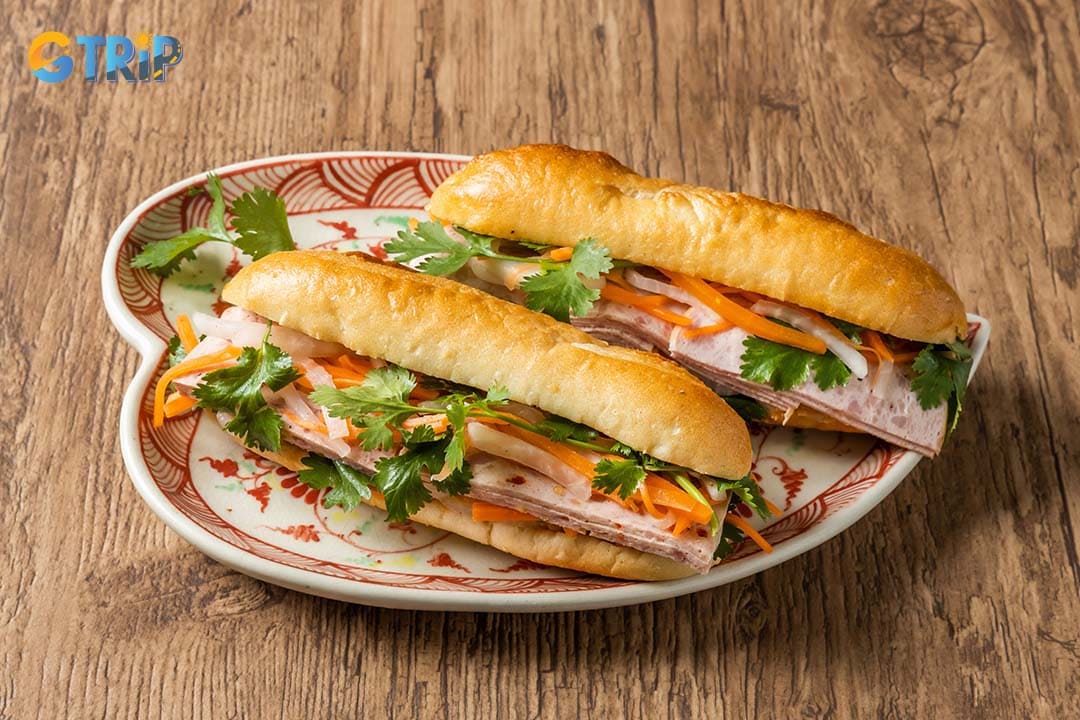
Vietnam’s iconic Banh Mi, a delicious fusion of French baguette and Vietnamese flavors that has become a global street food favorite
Key ingredients in Banh Mi
There are five main ingredient groups in Banh Mi that work in perfect harmony to create its signature flavor. You can explore the role of each component below.
Banh Mi bread (Crust)
The foundation of any great Banh Mi is its unique bread. The Vietnamese baguette is celebrated for its incredibly thin, crackly crust that shatters with each bite, revealing a remarkably soft and airy interior. This texture is essential, as it provides a satisfying crunch without being tough or overly dense. Unlike the chewier traditional French baguette, the Vietnamese version is often made with a blend of wheat and rice flour. This specific flour combination is the secret to its light structure, creating the perfect vessel that holds the fillings securely while absorbing the delicious sauces. The bread’s airy crumb ensures it doesn't overwhelm the other ingredients, allowing the flavors of the fillings to shine through in a perfect textural balance. It's purpose-built to be the ultimate sandwich bread.
Meat & protein fillings
The heart of the Banh Mi is its protein, which comes in a stunning variety of delicious forms. The most traditional and popular options involve pork, prepared in many ways, such as thit nuong (lemongrass-marinated grilled pork), cha lua (a smooth Vietnamese pork roll or sausage), and xiu mai (savory pork meatballs simmered in a light tomato sauce). Another classic style is the thit nguoi, or mixed cold cuts Banh Mi, which layers several types of cured meats, such as sliced pork roll and head cheese (gio thu). Beyond pork, you can find other delicious proteins, including grilled chicken (ga nuong) and fried fish cakes (cha ca), which offer a springy texture and savory seafood flavor. To cater to all diets, many modern Banh Mi stalls now offer excellent vegetarian and vegan options, using fillings like seasoned fried tofu, plant-based meats, or grilled mushrooms.
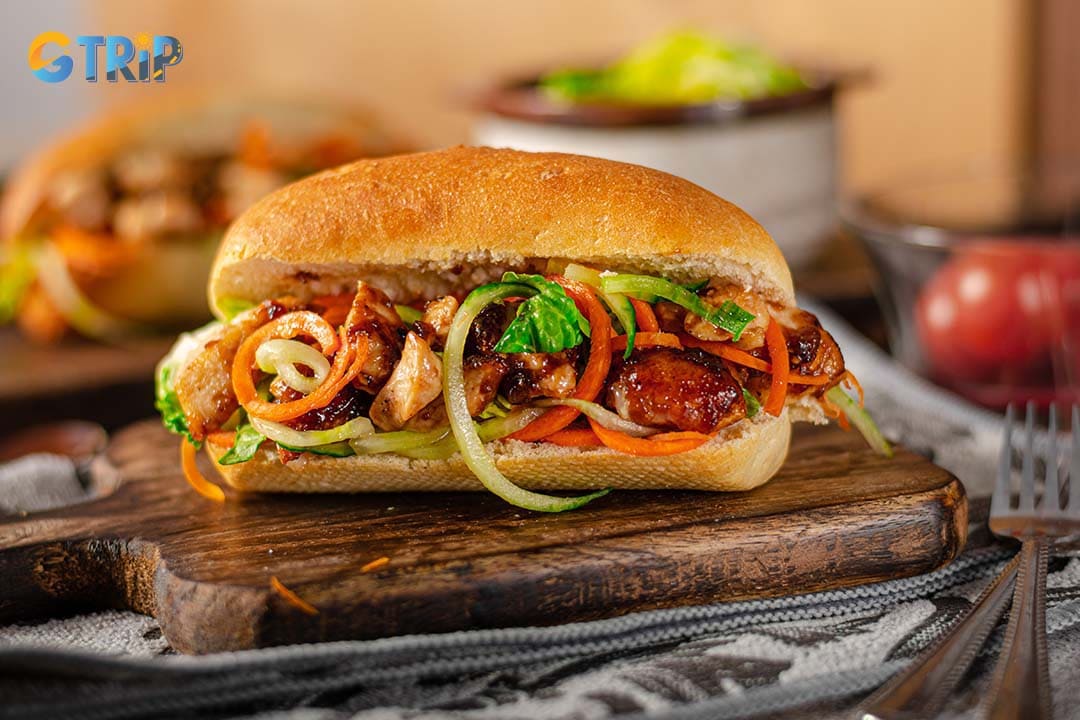
The diverse proteins in Banh Mi showcase its rich culinary versatility and universal appeal
Fats (Spreads & oils)
The creamy, savory spreads are what bind all the ingredients together and add a luxurious richness to the Banh Mi. A layer of rich, earthy liver pate, typically made from pork or chicken liver, is considered an essential component in many classic versions of the sandwich. This spread adds a deep, umami flavor that perfectly complements the savory meats. Alongside the pate, a swipe of Vietnamese-style mayonnaise provides a creamy, tangy counterpoint. This mayonnaise is often homemade with egg yolks and oil, resulting in a richer, more decadent texture than its Western counterparts. It was historically introduced as a substitute for butter and cheese, which were less suited to Vietnam's warm climate. Some vendors will also add a light schmear of margarine or butter to further enhance the richness and help create a moisture barrier on the bread.
Vegetables & pickles
To balance the rich meats and creamy spreads, Banh Mi relies on a vibrant assortment of fresh and pickled vegetables. The most crucial of these is do chua, a bright and tangy pickle made from julienned daikon radish and carrots. These vegetables are quick-pickled in a simple solution of vinegar, sugar, and water, which gives them a delightful crunch and a sweet-and-sour flavor. It cuts through the richness of the sandwich. In addition to the pickles, fresh vegetables add coolness and herbaceous notes. Standard additions include crisp slices of cucumber, fragrant sprigs of fresh cilantro, and finely sliced green onions. For those who enjoy a fiery kick, many stalls will add thin slices of fresh chili peppers, such as jalapenos or potent bird's eye chilies, providing a welcome burst of heat to round out the flavor profile.
Sauces & seasonings
The final touches that elevate a Banh Mi from good to great are its sauces and seasonings. A dash of soy sauce is a common addition, lending a deep, savory, and umami flavor that permeates the bread and fillings. Some versions, particularly those with grilled meat, might incorporate a drizzle of fish sauce (nuoc mam) for an extra layer of salty complexity, though this is more often used in the marinades. For spice lovers, a squirt of Sriracha or another chili sauce is almost always offered to add customizable heat. A simple sprinkle of salt and fresh black pepper is also used to season ingredients like fried eggs or pate. Finally, many of the best Banh Mi shops pride themselves on a secret "special sauce", a unique house blend that sets their sandwich apart and keeps loyal customers coming back for more.
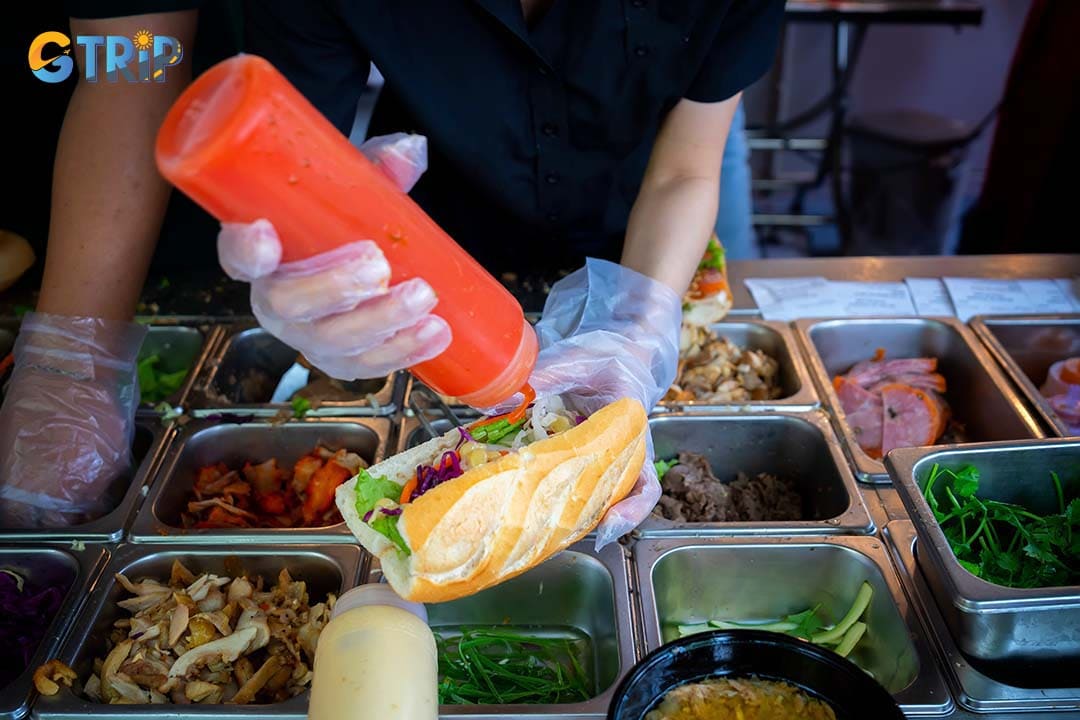
Sauces and seasonings add depth, spice, and signature flavor, transforming a good Banh Mi into an unforgettable one
Types of Banh Mi
From classic combos to deconstructed pan-fried versions, Banh Mi comes in an incredible array of styles. Here are some of the most popular types you'll encounter across Vietnam.
Cold cuts Banh Mi - mixed (Banh Mi thit nguoi - thap cam)
This is the quintessential, iconic Banh Mi, often listed on menus as the "special combo" or Banh Mi dac biet. The Banh Mi thit nguoi is a carnivore's delight, layered with a combination of different Vietnamese cold cuts. The experience begins with a generous spread of savory pate, followed by slices of cha lua (steamed pork roll), gio thu (head cheese made with pork ear and skin for texture), and sometimes sliced cured pork belly. These rich, savory meats are perfectly balanced by creamy mayonnaise, tangy do chua (pickled carrots and daikon), crisp cucumber, and fresh cilantro. Every bite offers a complex medley of flavors and textures, all harmonized by the fresh vegetables and crackly baguette. It's the original Saigon-style sandwich and a perfect introduction to the world of Banh Mi.
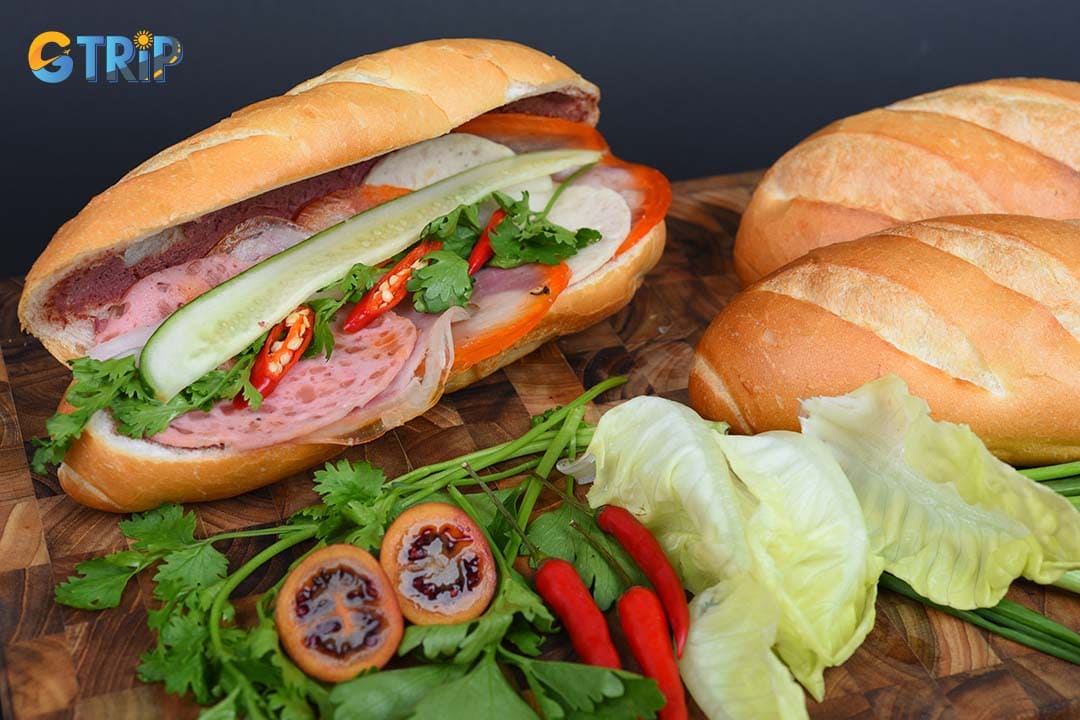
The Banh Mi thit nguoi, or special combo Banh Mi, is the classic Saigon-style sandwich featuring a medley of Vietnamese cold cuts, pate, pickled vegetables, and herbs
Grilled pork Banh Mi (Banh Mi thit nuong)
A universally beloved favorite, the Banh Mi thit nuong is famous for its irresistible smoky aroma and sweet-savory flavor profile. The star of this sandwich is the thit nuong, which consists of tender pieces of pork (often shoulder or belly) marinated in a fragrant blend of lemongrass, garlic, shallots, sugar, and fish sauce. The marinated pork is then grilled over charcoal until it's beautifully caramelized and slightly charred at the edges, infusing it with an incredible smoky depth. The warm, succulent pork is piled into a fresh baguette and typically accompanied by classic toppings like pickled carrots and daikon, cucumber, cilantro, and a drizzle of soy sauce. The combination of the warm, savory grilled meat with the cool, crisp vegetables creates a mouthwatering contrast that makes this one of the most popular and satisfying Banh Mi varieties.
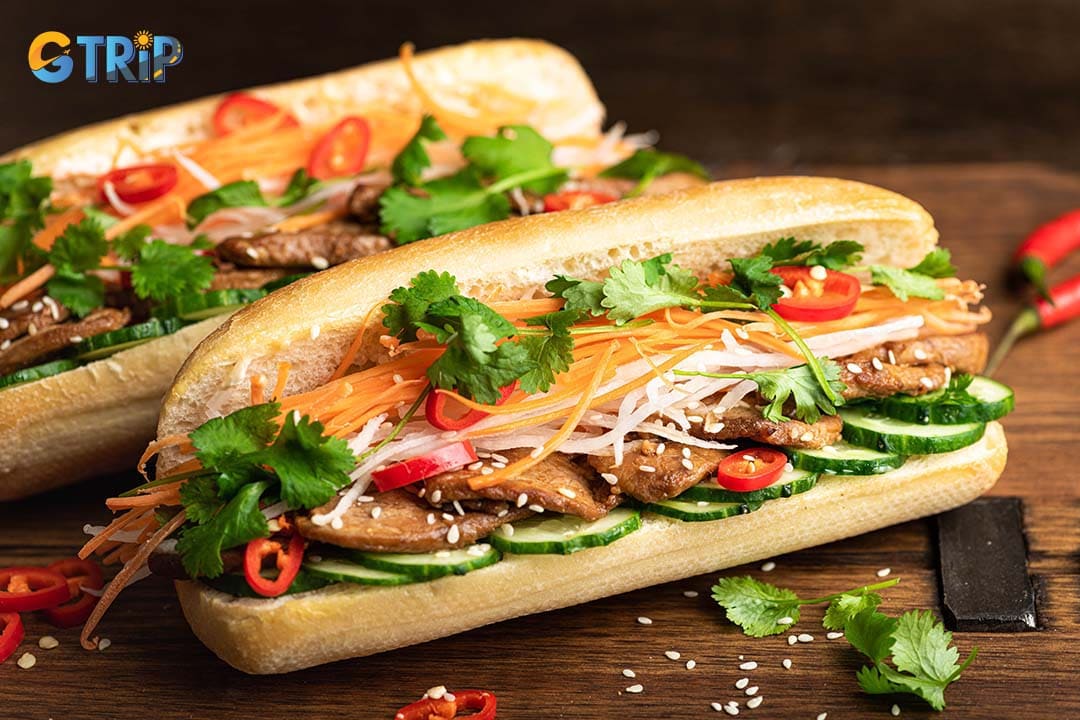
The Banh Mi thit nuong features smoky, lemongrass-grilled pork balanced by fresh pickles, herbs, and a touch of savory sauce
Fish cake Banh Mi (Banh Mi cha ca)
For a lighter but equally flavorful option, the Banh Mi cha ca is a fantastic choice, especially popular in coastal cities. This sandwich features cha ca, savory fried fish cakes, as its main protein. The fish cakes are typically made from a firm white fish that is minced and seasoned with ingredients like dill, pepper, and sometimes turmeric powder, then fried until golden brown and bouncy. The resulting texture is delightfully springy and packed with umami flavor. Inside the baguette, the warm fish cakes are often paired with an abundance of fresh dill and green onions, which complement the seafood perfectly. Combined with the usual suspects of tangy pickles, crisp cucumber, and a touch of chili sauce, the Banh Mi cha ca offers a unique and refreshing twist on the classic sandwich, highlighting the delicious flavors of the sea.
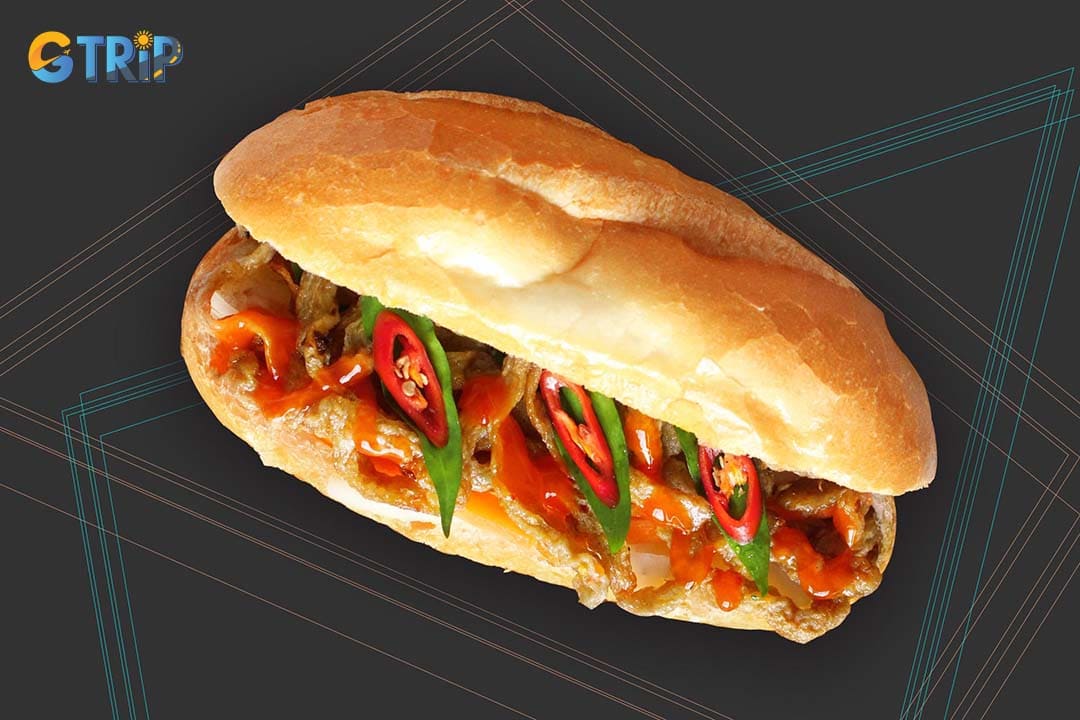
The Banh Mi cha ca features golden, dill-scented fried fish cakes paired with fresh herbs, pickles, and chili sauce
Pan-served Banh Mi (Banh Mi chao)
The Banh Mi chao, or "pan baguette", offers a fun, deconstructed, and interactive way to enjoy the classic flavors of the dish. Instead of being stuffed into a baguette, the hot ingredients are served sizzling in a small, individual-sized skillet, with a warm, crispy baguette served on the side for dipping. A typical Banh Mi chao features a medley of savory items sizzling away in the pan, such as a sunny-side-up egg, rich pate, Vietnamese sausages, and xiu mai (pork meatballs). The dish often arrives at the table still bubbling, creating an appetizing sight and sound. You tear off pieces of the fresh baguette and use them to dip into the runny egg yolk, scoop up the savory meatballs, and soak up all the delicious sauces in the pan. It's a hearty, satisfying meal, especially popular for breakfast or a leisurely brunch.

The Banh Mi chao features sizzling eggs, pate, sausages, and pork meatballs served in a hot pan with a crispy baguette for dipping
Meatball Banh Mi (Banh Mi xiu mai chen)
Hearty, saucy, and incredibly comforting, the Banh Mi xiu mai chen is a favorite among those who love a saucier sandwich. This version stars xiu mai, which are tender, seasoned pork meatballs simmered in a light, flavorful tomato-based sauce. Unlike the dry fillings of other Banh Mi, the meatballs are served with a generous ladle of their cooking sauce, which soaks beautifully into the airy bread. The meatballs themselves are soft and juicy, often made with minced pork, jicama, or onions for texture, and a simple blend of seasonings. The sandwich is assembled by spooning the hot meatballs and sauce into the baguette, then finishing it with a few sprigs of cilantro and some sliced chilies for a fresh, spicy counterpoint. It's a wonderfully messy and delicious experience, perfect for a warming and satisfying meal.
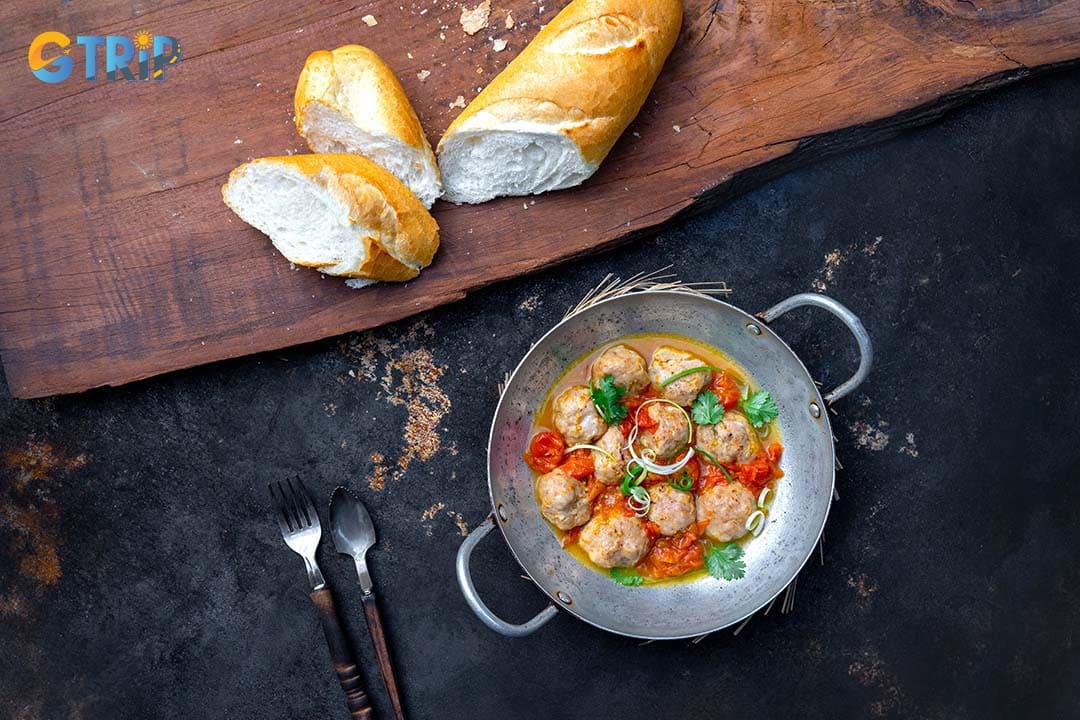
The Banh Mi xiu mai chen features tender pork meatballs simmered in a light tomato sauce, served with a generous spoonful of savory
Sunny-side-up egg Banh Mi (Banh Mi op la)
Simple, classic, and deeply satisfying, the Banh Mi op la is a testament to the idea that less is often more. This version, a popular breakfast staple across Vietnam, gets its name from the French term oeufs au plat, meaning "eggs on a plate". The preparation is straightforward: one or two eggs are fried sunny-side-up, leaving the yolks perfectly runny, and placed inside a warm baguette. The magic happens when the sandwich is seasoned. A generous drizzle soy sauce is added over the hot eggs, infusing them with a savory, umami flavor. The richness of the runny yolk acts as a natural sauce, coating the inside of the bread. This simple combination is then brightened with a touch of freshness from sliced cucumber, cilantro, and sometimes a few slices of chili for a kick. It’s a quick, affordable, and delicious way to start the day.
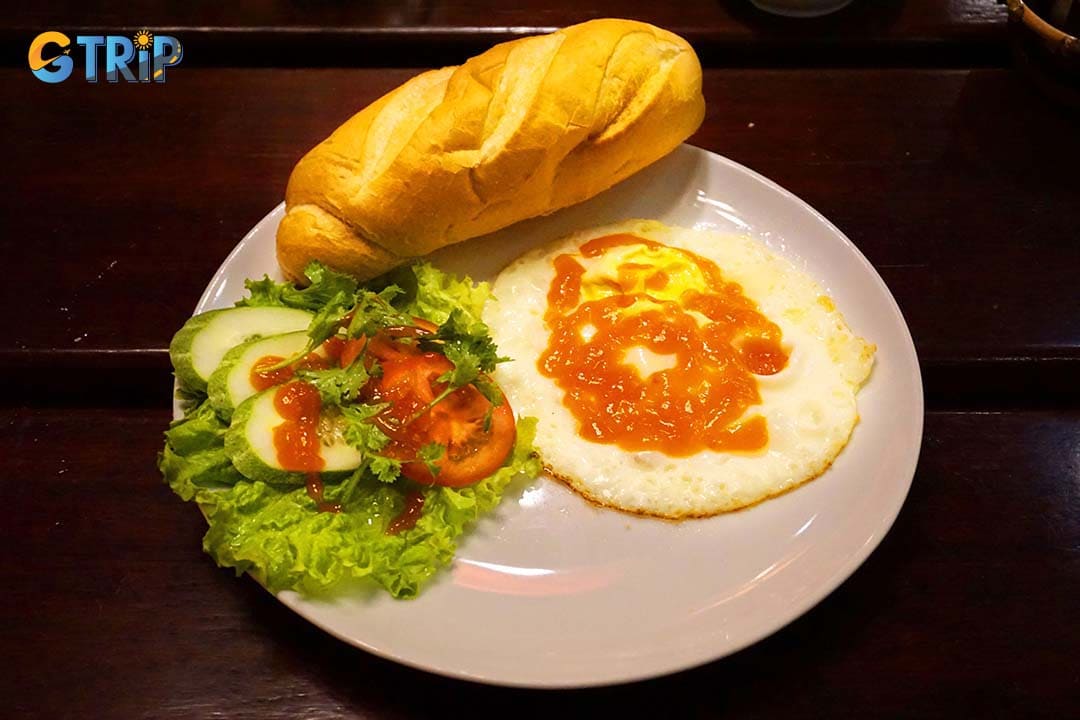
The Banh Mi op la features sunny-side-up eggs seasoned with soy sauce, their runny yolks soaking into the warm baguette
The flavor diversity of Banh Mi across Vietnam’s three regions
Banh Mi is not a monolith; its character changes as you travel through Vietnam. Each region puts its unique spin on the sandwich, reflecting local tastes and ingredients.
Banh Mi Saigon
Saigon's Banh Mi is a reflection of the city itself: bold, bustling, and generously packed. The sandwiches here are often larger than their northern counterparts, with an "anything goes" attitude towards fillings. The bread is characteristically light and airy with a super-thin, crispy crust, designed to hold a mountain of ingredients.
The flavor profile is dynamic and complex, often featuring a vibrant mix of sweet, savory, and spicy notes all in one bite. A classic Saigon Banh Mi thit nguoi is a symphony of textures and tastes, loaded with multiple cold cuts, rich pate, creamy mayonnaise, and a heaping portion of fresh cilantro and tangy pickles. The use of sauces and herbs is liberal, creating a sandwich that is anything but subtle.
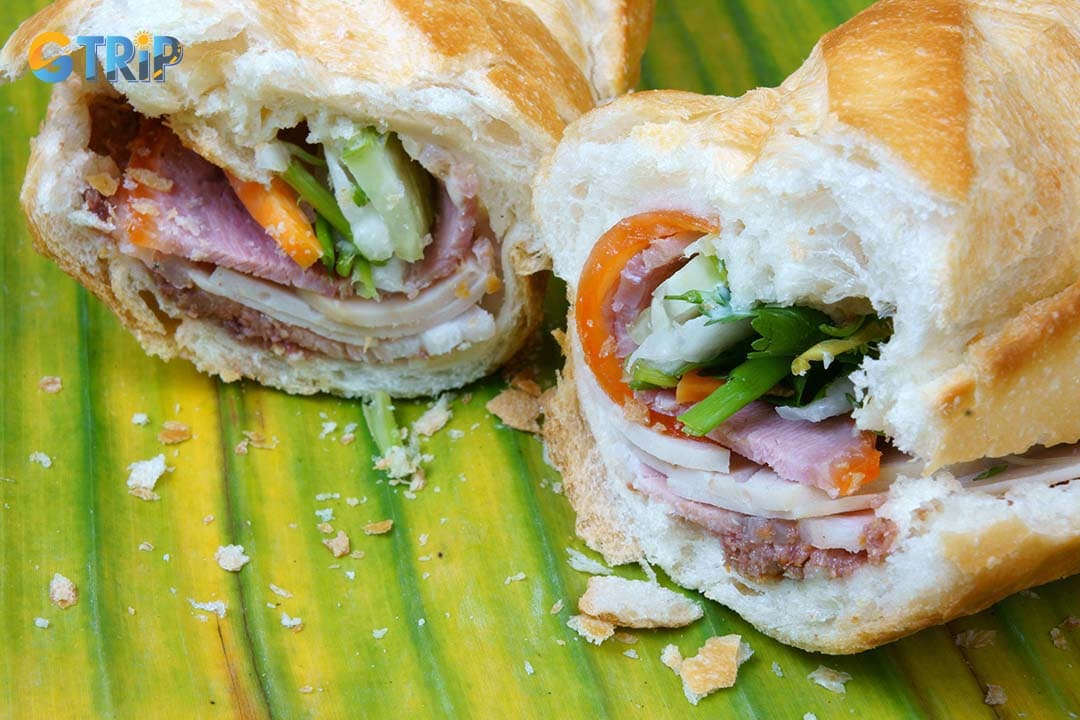
Saigon’s Banh Mi mirrors the city’s vibrant energy, bold, generous, and bursting with flavor
Banh Mi Hoi An
Often celebrated by international chefs and food critics, Banh Mi from the charming town of Hoi An is considered by many to be in a class of its own. While the ingredients are familiar, the execution is meticulous. The bread here is famous for achieving the perfect balance of a crackly crust and a fluffy interior, often warmed over charcoal right before serving.
What truly sets Hoi An's Banh Mi apart is the frequent use of a special, often secret, house-made sauce. This rich, savory, and slightly sweet gravy-like sauce adds an incredible depth of flavor that you won't find elsewhere. The fillings are carefully prepared and layered, creating a perfect harmony of sweet, sour, salty, and spicy elements that make every bite a culinary revelation.

Hoi An’s Banh Mi is world-famous for its perfect balance of crispy bread, flavorful fillings, and a rich, secret house-made sauce
Banh Mi Hanoi
In the capital city of Hanoi, the Banh Mi takes on a more minimalist and traditional character. The northern style is simpler and more restrained, focusing on a few high-quality core ingredients rather than a wide variety of fillings. The baguette itself can sometimes be slightly denser and chewier compared to the airy Saigon version.
You can explore more top-rated Banh Mi places in Hanoi to experience the best taste of Banh Mi after an exciting exploration of Hanoi's Old Quarter.
The flavor profile here is more subtle and balanced. A typical Hanoi Banh Mi emphasizes the savory, earthy taste of the pork liver pate, often paired with just a sprinkling of pork floss or a slice of pork roll. There's a less generous use of fresh herbs and sauces, allowing the quality of the bread and the pate to be the stars of the show. It’s a classic, no-frills approach that is deeply satisfying in its simplicity.
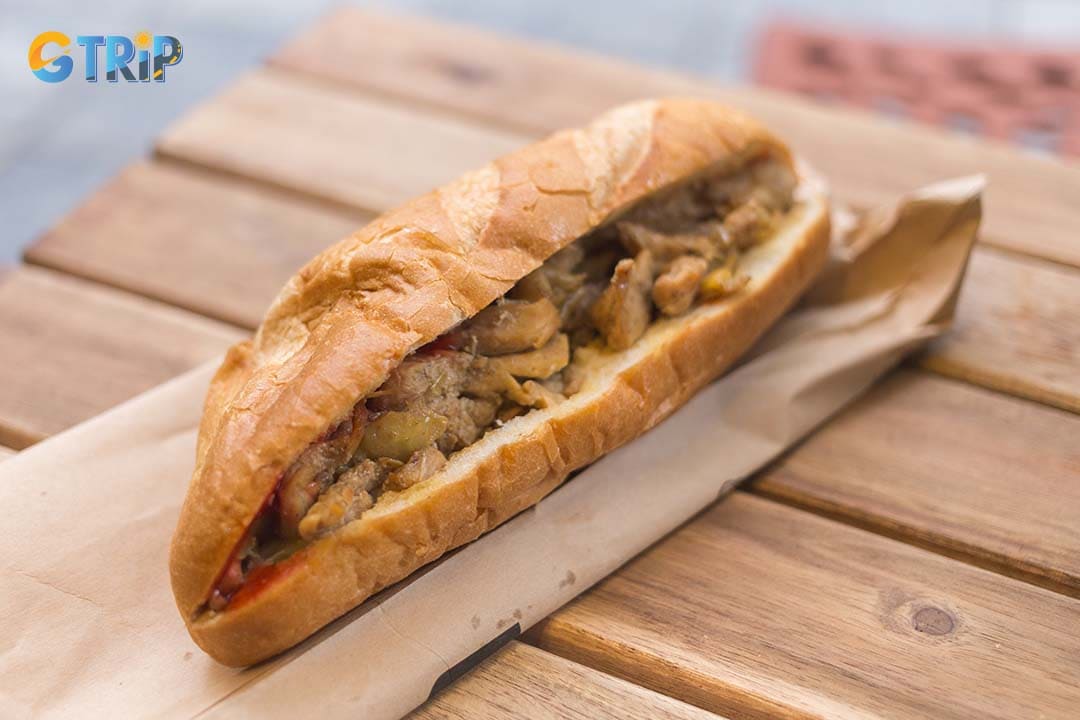
Hanoi’s Banh Mi embodies simplicity and tradition, featuring a denser baguette, rich pork liver pate, and minimal fillings
How to enjoy Banh Mi more deliciously
To get the most out of your Banh Mi experience, a few simple tips can make all the difference. These small steps ensure you enjoy every texture and flavor as intended.
- Always toast the baguette: The single most important step for maximum enjoyment is ensuring the bread is warm and crispy. If your sandwich has cooled down, a few minutes in a toaster oven will revive the crust, making it wonderfully crackly and bringing the entire sandwich to life.
- Take a complete bite: A Banh Mi is designed to be a symphony of flavors in every bite. Be sure to get a little bit of everything, the savory meat, creamy pate, tangy pickles, fresh herbs, and crusty bread, all at once. This allows you to experience the complex interplay of textures and tastes that makes the sandwich so special.
- Eat it fresh and immediately: Banh Mi is at its absolute best the moment it's made. This is when the contrast between the warm, crusty bread and the cool, crisp fillings is most pronounced. If you must save it for later, ask for the wet ingredients and sauces to be packed separately to prevent the bread from becoming soggy.
- Pair it with the right drink: Elevate your meal by pairing your Banh Mi with a classic Vietnamese beverage. The strong, sweet flavor of a ca phe sua da (Vietnamese iced coffee) cuts through the richness of the sandwich beautifully, while a refreshing iced tea (tra da) or fresh sugarcane juice (nuoc mia) provides a light and cooling contrast.
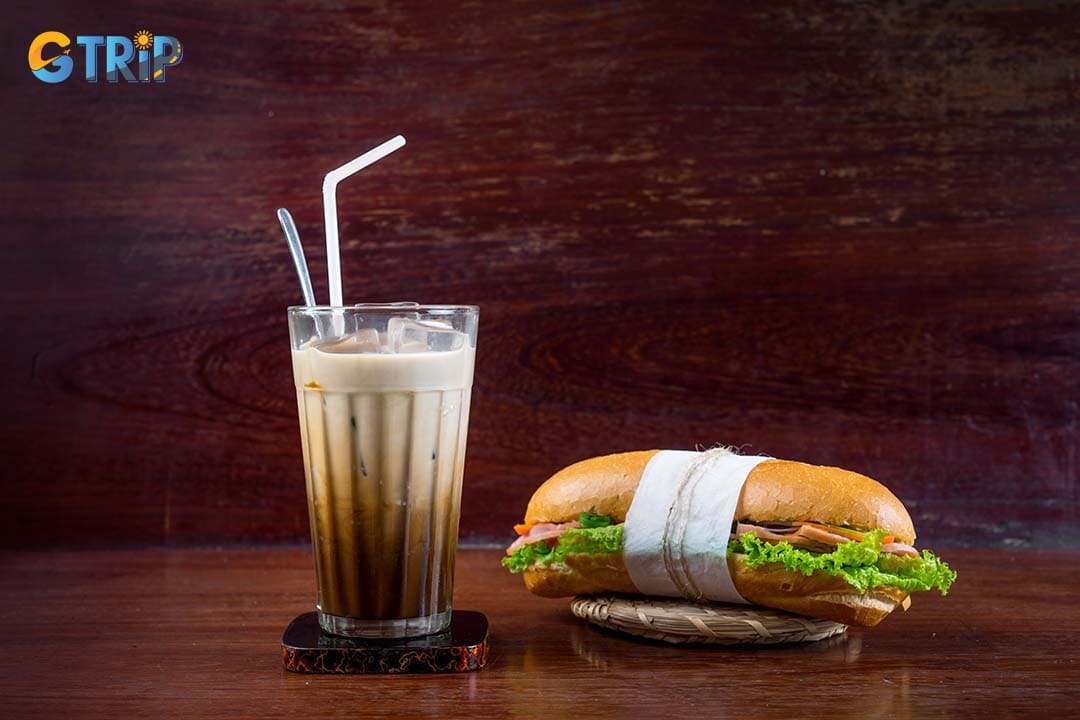
Follow the above steps to enjoy banh mi at its best
Frequently asked questions about Banh Mi
- What does "Banh Mi" mean?
In the Vietnamese language, "Banh Mi" literally translates to "bread". However, the term has become internationally recognized to specifically mean the iconic Vietnamese sandwich.
- Is Banh Mi spicy?
It can be as spicy as you like. Most vendors add fresh, sliced chilies or a chili sauce by default. If you prefer a milder taste, you can simply ask them to hold the spice by saying "khong cay".
- Are there vegetarian Banh Mi options?
Yes, vegetarian (Banh Mi Chay) and vegan options are very common. These are typically filled with ingredients like fried tofu, seitan, mock meats, taro, or a mix of grilled vegetables and mushrooms.
- What is the "special combo" or Banh Mi Dac Biet?
This term usually refers to the classic combination sandwich that includes a variety of Vietnamese cold cuts (thit nguoi). Fillings typically include pork roll, head cheese, and a generous spread of liver pate.

Banh mi has many types to try
The Banh Mi has evolved into a global culinary icon and a proud symbol of Vietnamese ingenuity. It perfectly encapsulates the essential elements of Vietnamese cuisine: the harmonious balance of sweet, sour, salty, and savory; the delightful contrast of textures; and the importance of fresh, vibrant herbs. The Banh Mi is more than just a sandwich. It’s an affordable, delicious, and deeply satisfying experience that tells a story of history, fusion, and flavor in every single bite. It’s a must-try dish that truly captures the delicious spirit of Vietnam.

